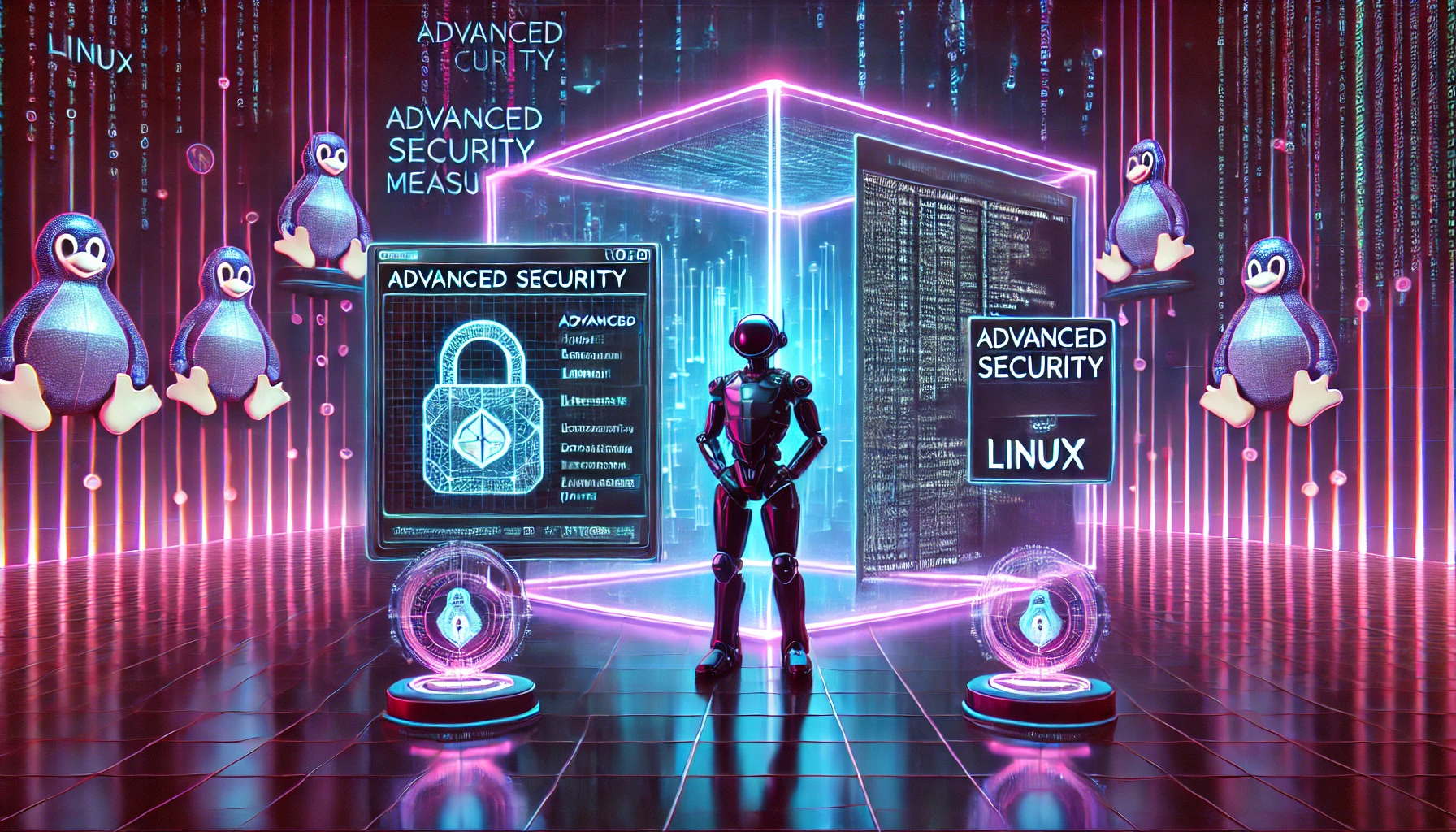Advanced Linux Security Measures
Introduction
In an era where cyber threats are increasingly sophisticated, securing your Linux environment is more than just a good idea—it’s a necessity. While tools like Fail2Ban can help mitigate some risks, implementing advanced security measures, especially around login methods, can dramatically reduce the chances of unauthorized access.
This article covers key security practices that will help you protect your Linux system, focusing on login security. Whether you’re a developer managing a small server or an IT professional overseeing a large network, these strategies are crucial for keeping your systems safe.
Why Login Security Matters
Login security is often the first line of defense against cyber threats. Weak or improperly configured login methods can leave your system vulnerable to brute-force attacks, unauthorized access, and other malicious activities. By implementing stronger login security measures, you make it significantly harder for attackers to gain entry into your system, thereby protecting your data and maintaining the integrity of your environment.
1. Setting Up Passwordless SSH Login
One of the most effective ways to secure SSH access to your Linux system is by setting up passwordless login using SSH keys. This method eliminates the need for password-based authentication, which can be vulnerable to brute-force attacks, and instead uses cryptographic keys that are nearly impossible to crack.
How to Set Up Passwordless SSH Login
Step 1: Generate SSH Keys
Run the following command on your local machine:
ssh-keygen -t rsa -b 4096 -C "your_email@example.com"
This command generates a public and private key pair. Choose a location to save the key and an optional passphrase for extra security.
Step 2: Copy the Public Key to Your Server
Copy your public key to the server:
ssh-copy-id username@remote_host
Replace username with your username and remote_host with your server’s IP or domain. This appends your public key to the ~/.ssh/authorized_keys file on the server.
Step 3: Test the Passwordless Login
Log into your server:
ssh username@remote_host
If configured correctly, you should be able to log in without a password.
Why It’s Secure
Passwordless SSH login uses a cryptographic key pair, making it far more secure than traditional passwords. The private key stays on your local machine, and the public key resides on the server, ensuring robust protection.
2. Enforcing SSH Key-Based Authentication Only
Disabling password authentication entirely ensures that only users with valid SSH keys can access your server.
How to Enforce Key-Based Authentication
Step 1: Edit the SSH Configuration File
Open the SSH configuration file:
sudo nano /etc/ssh/sshd_config
Step 2: Disable Password Authentication
Set the following line to "no":
PasswordAuthentication no
Ensure key-based authentication is enabled:
PubkeyAuthentication yes
Step 3: Restart the SSH Service
Restart the SSH service to apply changes:
sudo systemctl restart ssh
Why It’s Secure
Disabling password authentication eliminates brute-force attacks on user passwords, adding a robust layer of security.
3. Implementing Two-Factor Authentication (2FA) for SSH
2FA adds a second authentication factor, such as a one-time code, making unauthorized access significantly more difficult.
How to Set Up 2FA
Step 1: Install Google Authenticator PAM
Install the PAM module:
sudo apt-get install libpam-google-authenticator
Step 2: Configure Google Authenticator
Set up Google Authenticator for your user account:
google-authenticator
Follow the prompts to generate a QR code and set up time-based tokens.
Step 3: Configure SSH for 2FA
Edit the PAM configuration:
sudo nano /etc/pam.d/sshd
Add:
auth required pam_google_authenticator.so
Enable challenge-response authentication in the SSH configuration:
ChallengeResponseAuthentication yes
Step 4: Restart the SSH Service
Restart the SSH service:
sudo systemctl restart ssh
Why It’s Secure
2FA ensures that even if an attacker obtains your SSH key, they cannot log in without the second authentication factor.
4. Disabling Root Login via SSH
The root account is a prime target for attackers. Disabling root login forces users to log in with less privileged accounts and escalate privileges when necessary.
How to Disable Root Login
Step 1: Edit the SSH Configuration File
Open the SSH configuration file:
sudo nano /etc/ssh/sshd_config
Step 2: Disable Root Login
Set the following line to "no":
PermitRootLogin no
Step 3: Restart the SSH Service
Restart the SSH service:
sudo systemctl restart ssh
Why It’s Secure
Disabling root login reduces the attack surface of your server, forcing attackers to compromise a less privileged account and escalate privileges—a significantly more challenging task.
Wrapping Up
Securing your Linux environment is crucial, especially when it comes to login methods. By implementing advanced security measures like passwordless SSH login, enforcing key-based authentication, adding two-factor authentication, and disabling root login, you can significantly reduce the risk of unauthorized access.
These practices are not just for large enterprises—they're essential for anyone serious about protecting their Linux environment, whether for personal use or professional development. By taking these steps, you can build a robust defense against the ever-growing threats in today’s digital landscape.
FAQs
What is the benefit of passwordless SSH login? Passwordless SSH login provides enhanced security by using cryptographic keys instead of passwords, making it nearly impossible for attackers to gain access without both the private and public keys.
Why should I disable root login via SSH? Disabling root login reduces the attack surface of your server, forcing attackers to compromise a less privileged account, which is more difficult to escalate.
Is Two-Factor Authentication (2FA) necessary for SSH? While not mandatory, 2FA adds a significant security layer by requiring a second form of authentication, reducing the risk of unauthorized access even if the SSH key is compromised.
How often should I review and update my SSH configuration? Regularly review and update your SSH configuration to ensure it aligns with the latest security best practices and addresses newly discovered vulnerabilities.
Can I use multiple layers of these security measures together? Yes, combining measures like passwordless SSH, key-based authentication, 2FA, and disabling root login creates a robust defense against unauthorized access.
